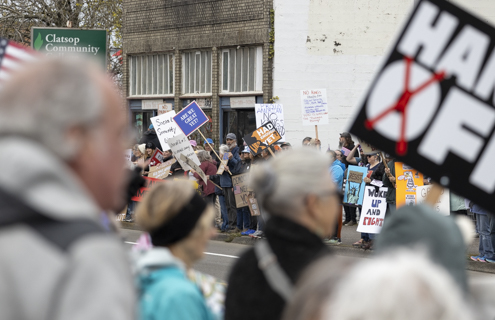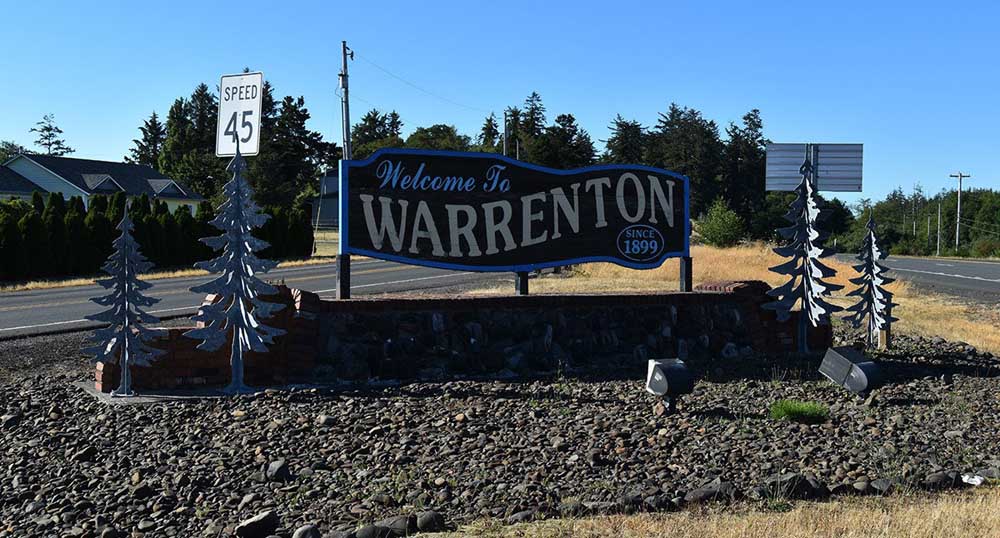Ham radio a vital link during 2007 storm
Published 7:00 pm Thursday, November 30, 2017
They just don’t make technology like they used to.
When the fierce 2007 storm knocked out phone, internet, power and cable lines on both sides of the Columbia River, fans of a largely forgotten, century-old innovation came to the rescue — amateur, or ham, radio operators.
“There was a period of time when ham was basically it,” Pacific County Commissioner Frank Wolfe recalled.
Wolfe is one of the roughly 100 “hams” in Pacific County. In the aftermath of the storm, he and his fellow amateur radio operators helped county officials get in touch with Camp Murray, the center of Washington state’s emergency operations. They also helped dozens of locals.
“We would dispatch someone to go down and find Aunt Sally,” Wolfe explained.
In one case, their coordination with emergency responders may have saved the life of a man who lost consciousness when his oxygen concentrator ran out of power.
The operators also provided on-the-ground information about weather and road conditions to the staff in Pacific County’s Emergency Operations Center in South Bend.
In Oregon, too, dozens of radio operators facilitated communications between dispatchers and emergency responders. Their services were so vital that when Clatsop County commissioners signed a disaster declaration, they used amateur radio to send it to Gov. Ted Kulongoski.
“It was really the first time that I understood why they were a value to the extent that they were,” said Tiffany Brown, Clatsop County’s emergency manager. “They really saved the day in those few days before we got communications back up and running.”
A decade later, people are even more dependent on cellphones and the internet, and that means they may be in for some unpleasant surprises when the weather goes wild, Wolfe said. That’s when ham radio really shines. Unlike a lot of more modern communication tools, it doesn’t rely on fiber-optic cables, electrical connections or other things that are likely to fail in a storm. The gear is relatively cheap, easy to operate and portable. The radios can be powered with solar panels or batteries, and they can be used to communicate with people all over the world.
That’s why Wolfe has spent 20 years training local operators and expanding the county’s ham infrastructure, largely at his own expense.
When he first got interested in helping the county with disaster preparedness in 1980, officials were worried about a different kind of disaster.
“The big thing back then was Mount St. Helens,” Wolfe said. “The debris from the volcano had blocked the Toutle River and basically built a dam made out of talcum powder.”
While workers raced to stabilize the Toutle, emergency managers feared the dam would collapse, sending a 30-foot-deep mud flow through Cowlitz County, and potentially setting off a domino effect that would cause flooding all the way to the coast.
Local leaders realized that if the Toutle dam collapsed, siren systems in Longview and Kelso might spur huge numbers of people to head for the coast, Wolfe said. That got local leaders thinking seriously about how they would feed, shelter and care for people during a large-scale disaster.
The 2007 storm inspired leaders on both sides of the river to take another hard look at their disaster-response plans. As a result, Brown, and her Pacific County counterpart, Stephanie Fritts, both developed stronger ties with the amateur radio community. Radio operators have set up equipment at county-owned facilities on both sides of the river. In Clatsop County, about 500 people earned their amateur radio licenses.
Enthusiasts continue to work on creating more radio sites, and strengthening the signal. Wolfe has personally improved the local radio system by buying and installing repeaters — the devices that help transmit strong radio signals across larger distances. A decade ago, much of the region had a ham signal, but coverage was spotty, especially in hilly or mountainous areas. Now, due to the roughly 20 repeaters Wolfe has installed at his own expense, Pacific County’s signal extends all the way to Camp Murray in Tacoma. That ensures that local emergency responders will always have a way to get in touch with their state-level counterparts on the National Guard base.
“I think windstorms are good for us because they test our planning,” Wolfe said. “It’s just enough of a disaster to get people’s attention.”
He hopes these events will show a new generation of potential amateur radio enthusiasts that while ham might seem antiquated, it’s still very relevant when everything else goes haywire.
“Our people are already deployed. They live there,” Wolfe said. “They’re already equipped. It’s their own equipment that they bought, so they know how to use it. And they’re already trained.”





